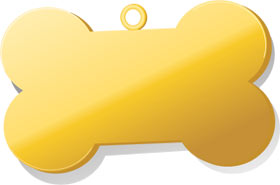If your dog is having excessive nasal discharge, there are a number of possible causes. Find out what your dog’s runny nose could mean here.
It’s that time of year again. Runny noses and sneezes abound for us humans, as new plants bloom in the fall. But did you know that your dog can suffer a runny nose too?Dog runny noses are more correctly called nasal discharge. It can run the gamut from clear and watery to thick and purulent. The appearance and frequency of nasal discharge in dogs can tell you much about the underlying cause.
Could My Dog Have Allergies? In Short, Yes.
A thin, watery discharge without color or odor is likely a sign of mild irritation in the nasal cavities. This can occur with seasonal allergies or other causes of inflammation within the nose such as an inhaled foreign object (grass and seeds). In some cases, antihistamines will clear up the discharge without further incident. Dogs do sometimes respond to environmental allergens just as humans do—with red, watery eyes, sneezing, and a runny nose.
More Serious Causes of Dog Runny Noses
In cases where the discharge is thick, has odor, or discoloration with blood or pus, more serious causes are suspected. If this is the case, your veterinarian will do a thorough investigation of your dog’s recent history (any history of kennel boarding, grooming, dog park visits, or doggy daycare? Any exposure to dogs otherwise?) and a physical exam. They will also review your dog’s vaccination status to make sure that they are current.
Once the initial history and exam are finished, your veterinarian will discuss possible causes of your dog’s runny nose. If both nostrils are involved, the causes are frequently different than if only one nostril. Both nostrils points to a more generalized cause while one nostril points to a localized source. If the discharge is clear, thin, and watery, your veterinarian may try antihistamines and monitoring at home for any other signs. If none develop, and your dog seems otherwise healthy, it may be normal for a small amount of discharge to occur. No further treatment may be needed.
If the discharge continues or worsens, then more diagnostics are needed. In the case of unilateral discharge (one nostril involved), the causes could include an inhaled foreign body such as grass or grass awns leading to rhinitis, a fungal infection, or a nasal tumor. Your veterinarian will likely try a course of antibiotics. If no response occurs, then the next step is generally a rhinoscopy. In this procedure, your dog will be anesthetized, a camera will be inserted into the nostril to look at the area, and samples will be taken for culture and biopsy. In some cases, a CT scan of the head is needed to make a definitive diagnosis.
If both nostrils are involved, this points to a more generalized problem such as a viral or bacterial infection. Dogs are prone to both especially if they board at a kennel, visit the dog park, or go to grooming facilities.
Canine influenza is becoming more common in the dog population. In this case, concurrent with the runny nose would be a fever, sneezing and coughing, lethargy, and often lack of appetite. Pneumonia is a possible side effect. Canine kennel cough, a common bacterial complex, can also cause a nasal discharge. This generally occurs when the disease progresses to pneumonia.
Summary
In the case of a dog with no other symptoms and some clear nasal discharge, a runny nose is not cause for immediate concern. It is when your pet develops other symptoms such as red, watery eyes, sneezing, coughing, fever, lack of appetite, or lethargy that a trip to the veter
inarian is warranted.


Speak Your Mind